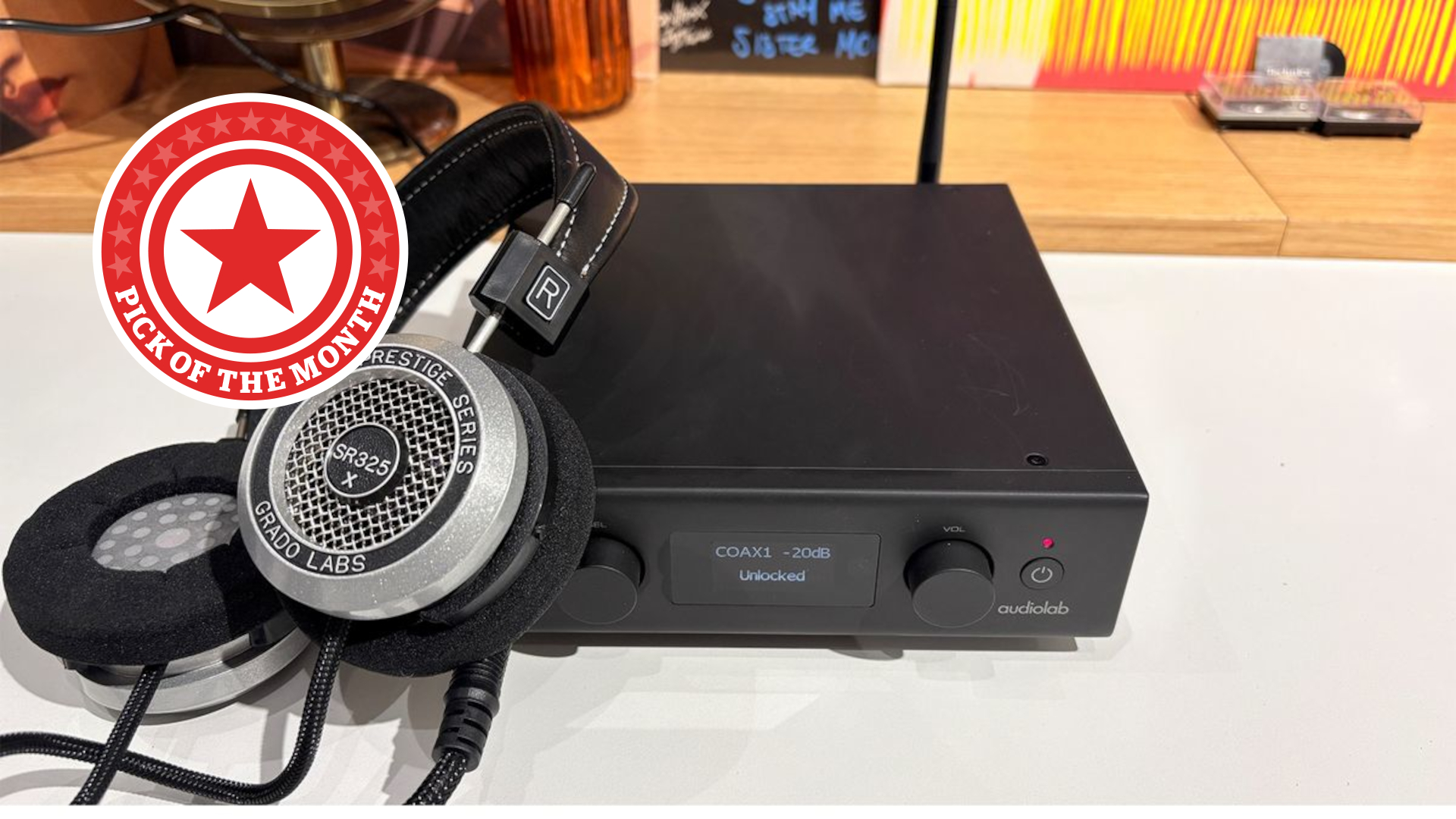Ultra short throw projectors: everything you need to know
UST projectors: the future of home cinema?
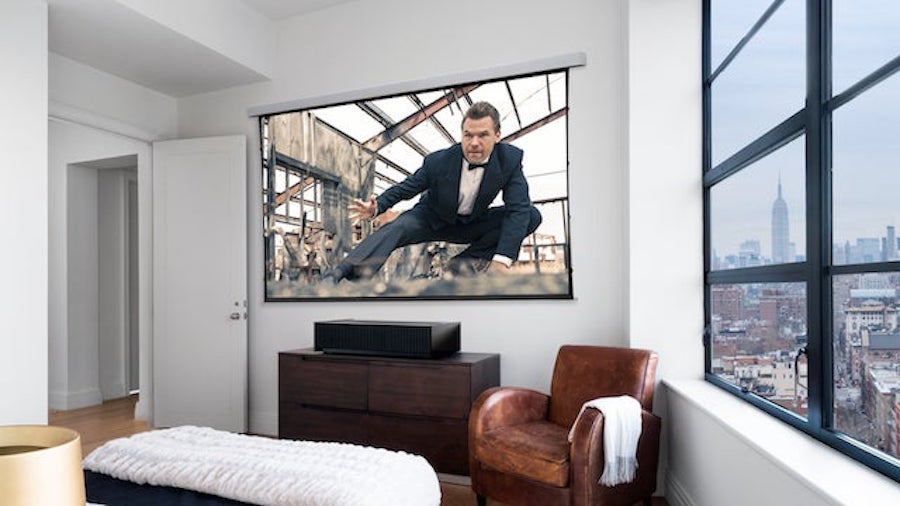
It’s not just the TV world that’s been going through a period of intense change in recent years. The projector world has also found itself needing to innovate to keep up with fast-changing modern lifestyles and find ways of satisfying the exploding demand for cinema-sized experiences at home.
This latter market, in particular, has led to a renaissance in the fortunes of Ultra Short Throw (UST) projectors. Once found pretty much exclusively in classrooms and board rooms, UST projectors, with their ability to deliver large pictures even when sat right up close to a screen or wall, are now finding their way into more and more living rooms. And the more they’re targeting living rooms, the better they’re starting to get.
How do Ultra Short Throw projectors work?
Ultra short throw projectors look quite different from regular projectors and produce their images in a quite different way.
The vast majority of them essentially bounce their images around a series of internal lenses, before finally reflecting a super-sized image out through an aperture cut into their top edges. One or two models use an output ‘lens’ that protrudes up from the top of the projector’s top edge, but this approach is relatively rare – and it’s still based on the same fundamental system of enlarging the image via a series of internal lenses.
So effective can the UST approach be that it’s possible to get 100-inch images from projectors placed just inches from a wall or screen.
Note that you can get short (rather than ultra short) throw projectors that resemble more traditional projector designs, with front-firing lenses. These still need at least a few feet of throw distance to achieve large images, though, so they should not be considered as belonging to the same class as UST projectors.
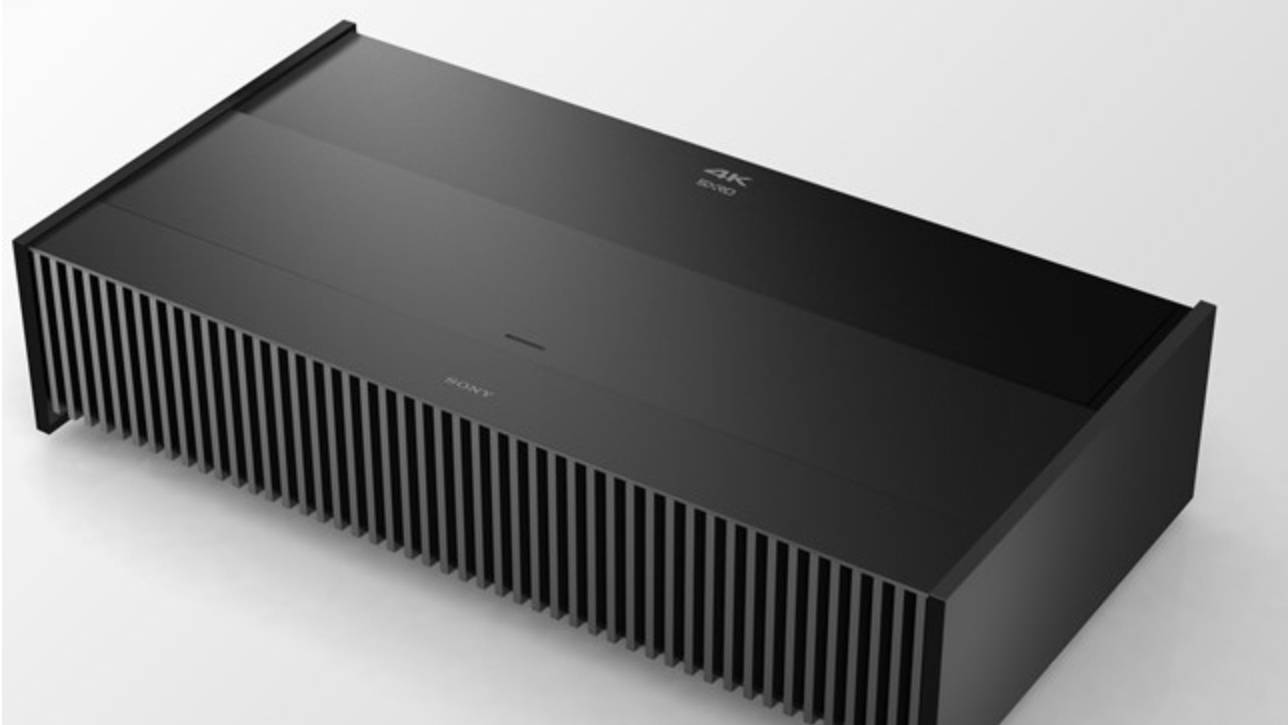
When did UST projectors start targeting the living room?
As noted earlier, UST projectors were originally designed for the education and business sectors. Arguably the first UST projector to make a stir as a home entertainment device was Sony’s LSPX-W1S ‘Life Space’ model, which made its memorable debut at the CES in 2014. This cost tens of thousands of pounds and was predominantly only available in limited numbers through custom installers, but it instantly woke the world up to the idea of UST projectors having a potentially major role in our future homes.
The latest hi-fi, home cinema and tech news, reviews, buying advice and deals, direct to your inbox.
Sony followed the Life Space UST projector up with a more accessible model in 2017, the VPL-VZ1000ES, that incorporated a laser lighting system – something we’ll come back to in the next section – and is actually still available now for around half its launch price (though it still commands a five-figure sum).
Since then, the fortunes of UST projectors in the home have been greatly expanded by the arrival of much more affordable home-focused models (adapted, typically, from business/education designs) from such dedicated projector-focused brands as Epson and Optoma.
The advantages of UST projectors...
Accommodating a normal projector in a room as full of people, light and other furniture as a living room typically tends to be a royal pain. The projector will likely have to sit a few metres from your screen or wall, often putting it at the heart of your room where you or your popcorn and pizza are also likely wanting to be. Projectors kick out heat and cooling fan noise, too, which is much harder to ignore if it’s coming from a projector right next to you.
UST projectors, on the other hand, can be placed so close to a wall of your living room that, in many cases, they’re practically touching it. They can be placed on a sideboard out of the way of the main living room thoroughfare, and far enough from seating positions to be not nearly as distracting with their noise or heat.
The further a projector is from your screen, too, the more the impact of its images can be ‘diluted’ by ambient light. So again it makes sense to limit throw distance as much as possible if you’re trying to produce a satisfying picture in a regular (very likely not blacked-out) living space.
Ambient light also impacted UST projectors in their classroom and conference room days too, of course. As a result, UST projectors have long been associated with high levels of brightness, again boosting their living room credentials versus more traditional projector approaches.
This pursuit of brightness has led to UST projectors adopting laser light sources over duller lamp solutions more than the regular projector world has. This in turn brings with it a trio of further practical advantages.
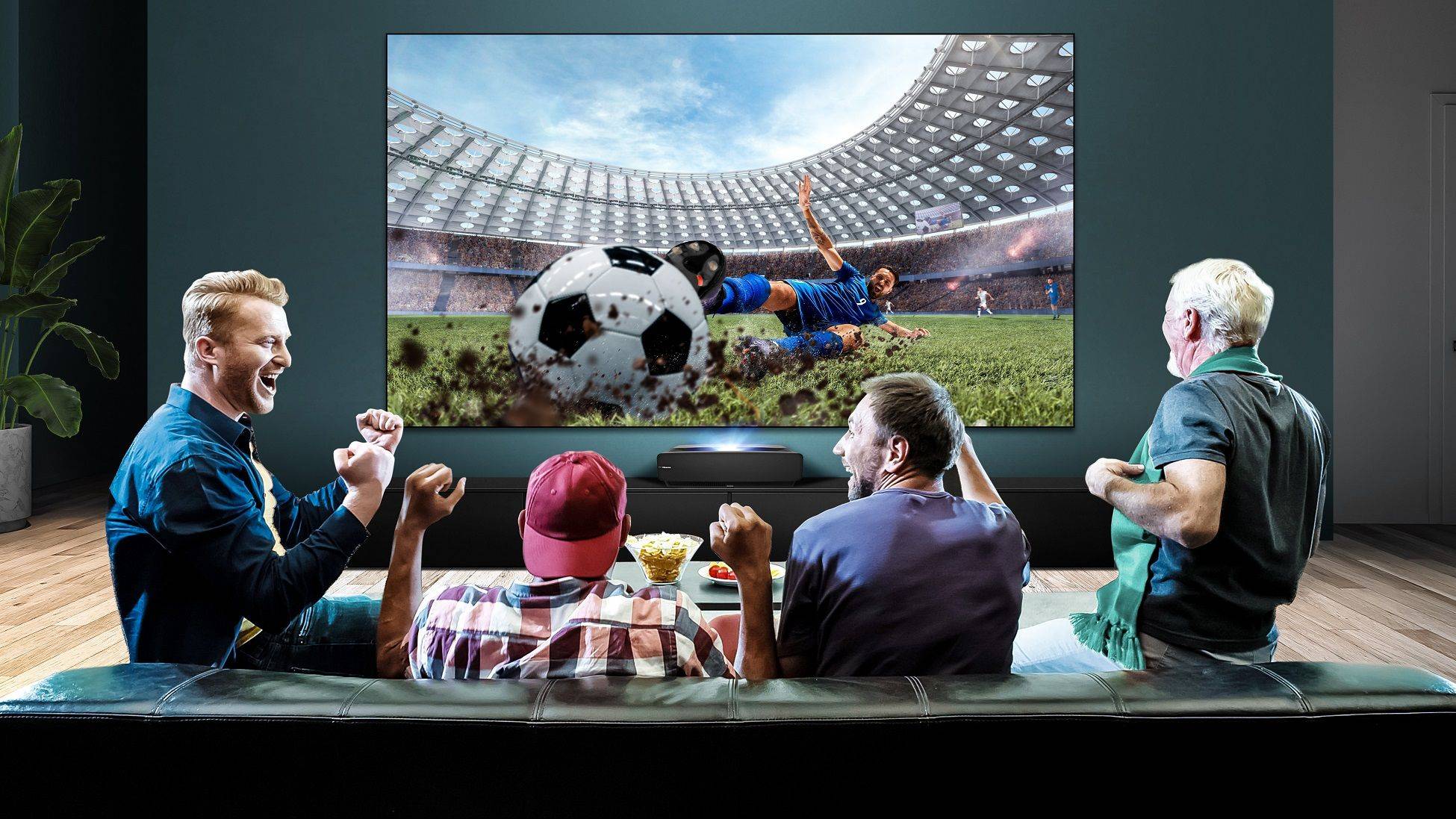
First, laser projectors last far longer than lamp ones before they wear out – typically 20,000 hours at least, versus 2000-5000 hours for lamps. Second, laser projectors retain their brightness over their lifetime much better than lamps do. And third, lasers open the ability to deliver more of the wide colour gamuts associated with today’s high dynamic range images than the vast majority of lamp projectors. Oh and one more thing – laser projectors can usually be turned off and on much more quickly than lamp projectors – even instantly, in some cases – as lamps have to warm up and cool down.
We realise we’ve encroached with all this talk of laser projector advantages into territory that’s not solely about UST technology. Given that pretty much every UST projector around now uses laser lighting, though, it’s a perfectly valid point to discuss.
A growing trend in the UST projector market sees them rocking not just built-in speaker systems, but built-in speaker systems capable of pumping out audio that at least rivals that of most of today’s TVs. What’s more, these speakers are often built into the rear side of UST projectors, which is, of course, the part of a UST projector that faces into your room. So the audio from UST projectors tends to sound more direct and impactful than sound coming from many TV speakers, which are often placed behind the screen.
The goal of UST projectors potentially replacing TVs has also seen a fast-growing number of them starting to include built-in smart TV systems, complete with wi-fi connectivity and support for video streaming services. Such features are currently carried by precious few ‘regular’ projectors.
Having mentioned the ultimate goal of UST projectors replacing the experience of watching a giant TV, it’s important to stress that UST projectors cost a fraction of what you’d have to pay for, say, pretty much any 90-inch LCD or OLED TV.
This is really the single biggest reason for USTs suddenly becoming such home cinema hot properties. So much so that Hisense actually sells UST projectors partnered with ambient light-rejecting screens under the title of ‘Laser TVs’.
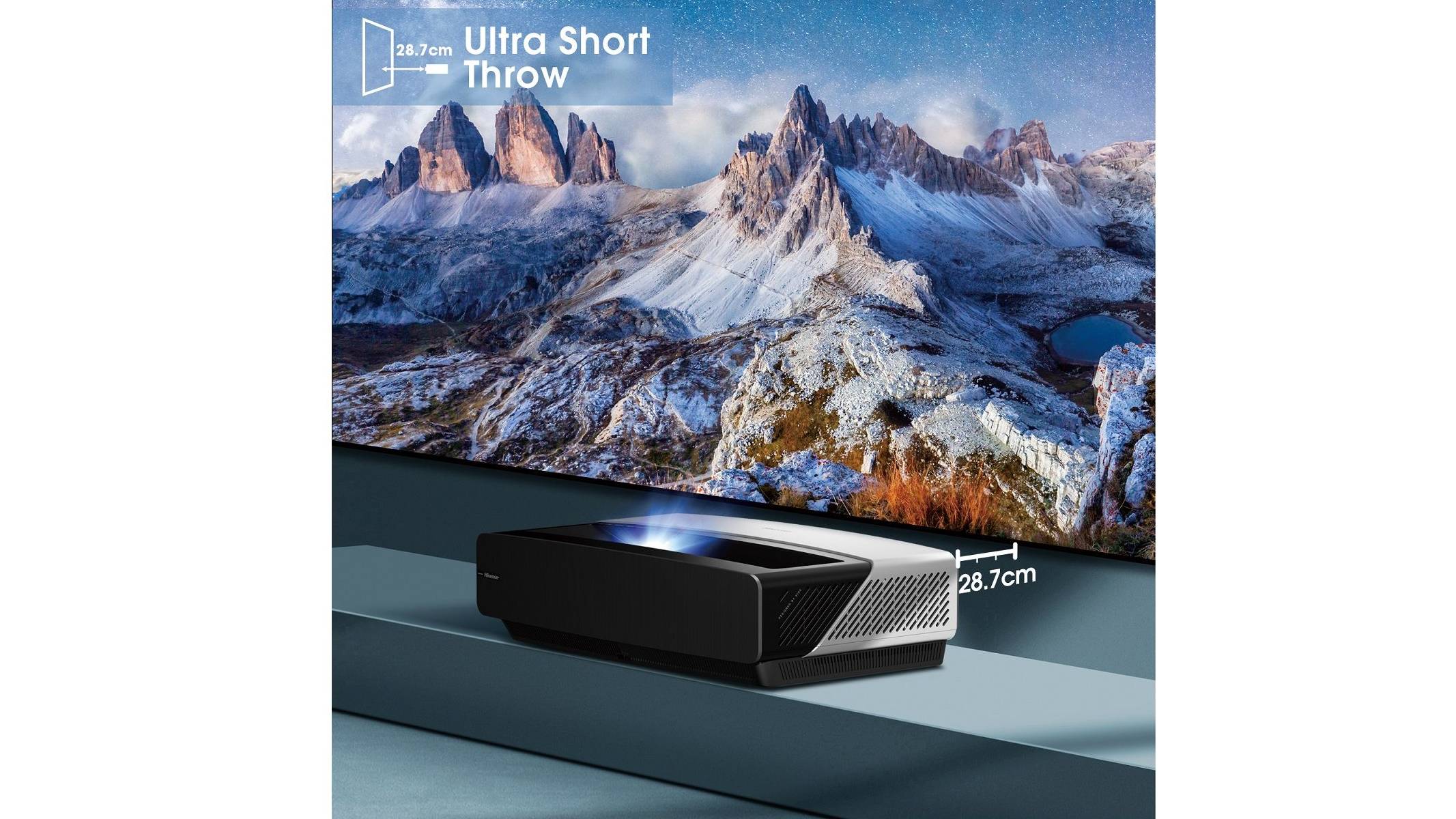
...and the disadvantages of UST projectors
UST projectors are currently significantly more expensive than many decent ‘regular’ home entertainment projector options. While you can get good quality normal projectors for just a few hundred pounds or dollars, decent UST projectors tend to start at around £2500 / $3000 / AU$4500, with the £3500+ / $4500+ / AU$6000+ bracket actually playing host to the majority of models these days.
Typically, UST projectors are also significantly bigger than the majority of ‘living room’ projectors. All those internal, magnifying optics have to go somewhere, after all. Don’t forget, though, that UST projectors will be sat relatively out of the way on a sideboard, rather than filling up a coffee table in the middle of your room.
While things have greatly improved in this respect over recent years, there remain set-up and picture quality compromises to consider with UST projectors, too.
Getting the image from a UST projector into exactly the right place can be quite complicated. It’s not such a problem if you’re simply projecting straight onto a wall, but if you’re using a screen the lack of zoom and optical image shifting features on UST projectors can make the positioning of the screen (or the projector) particularly tricky to get just right.
It can also be more difficult to get the geometry of images from UST projectors spot on than it typically is with regular projectors. Not so long ago it was very common for UST projector images to suffer from sagging along their top edge, for instance – and while this is now seldom seen, I’ve personally spent many hours over the years fine-tuning little imperfections out of UST image geometry using whatever tools a particular model provides. Usually based around some sort of grid system with multiple selectable adjustment points.
Every centimetre closer to or further from a screen can dramatically affect the size of the image from a UST projector, too. This again potentially makes the positioning of a screen a matter of unusually extreme precision. With this in mind, it’s very handy that at the time of writing, Hisense actually offers a free delivery and installation service with its Laser TVs.
Probably the single biggest issue currently faced by UST projectors is adapting their images for potentially very different room conditions. On the one hand, UST projectors for the home will in most setups need to be bright enough and bold enough with their colours to ‘punch through’ significant amounts of ambient light found. On the other hand, people interested in watching pictures of 100 inches or larger in their homes might at times feel like dimming the living room lights and drawing the blackout curtains for a serious movie night. At which point a projector’s images need to focus more on contrast, black level and colour accuracy/subtlety.
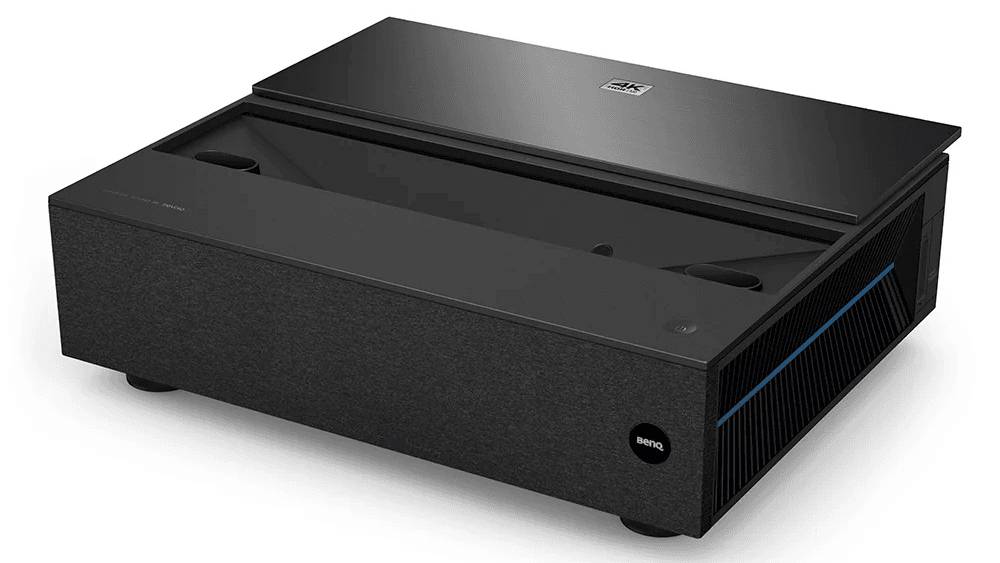
Trying to cater for both these very different circumstances is extremely difficult, and typically UST projectors struggle to deliver convincing contrast and black levels when you try to watch a film in a dark room.
UST projectors don’t typically deliver as much dynamism and vibrancy in bright rooms as decent quality TVs, either – though decent TVs as big as the images you can get from a UST projector are, of course, few and far between and, as noted earlier, tend to cost a small fortune even when you find them.
It’s worth mentioning Hisense’s Laser TVs again here, since the ambient light rejecting (ALR) screens these systems ship with makes a huge difference to the brightness the UST projector components can deliver in a bright room.
Even if you don’t get a Hisense Laser TV, you might want to consider partnering a UST projector with a high-gain screen that also potentially features some sort of image structure to help reject ambient light. Though having said that, another potential negative with UST projectors that can actually be exacerbated by ALR screen technologies is hot spots; a phenomenon whereby part of the image – usually towards the bottom edge – can look unnaturally brighter than the rest.
One final potential issue with UST projector pictures is focus uniformity. The technology and lenses used to deliver big images from tiny throw distances make it harder to achieve the same level of focus at the image’s edges and corners as you get in the image’s central areas.
We should stress, though, that both the focus and ‘hot spot’ issues are typically much less common on UST projectors than they used to be, as brands start to use higher quality lenses and optics.
The bottom line
While you need to be fully aware of what you’re getting into if you go for an ultra short throw projector instead of – or even alongside – a TV, they are improving dramatically with every new generation. So much so that the best models really can already be a (literally) massive amount of fun for anyone who understands and can work with the compromises.
MORE:
The best projectors you can buy – 4K, Full HD, portable and short-throw
How to set up an outdoor projector cinema system in your garden
Read the five-star Samsung The Premiere LSP9T ultra short throw projector review
Or consider the BenQ V6050, Xgimi Aura or Epson EH-LS300 ultra short throw projectors
John Archer has written about TVs, projectors and other AV gear for, terrifyingly, nearly 30 years. Having started out with a brief but fun stint at Amiga Action magazine and then another brief, rather less fun stint working for Hansard in the Houses Of Parliament, he finally got into writing about AV kit properly at What Video and Home Cinema Choice magazines, eventually becoming Deputy Editor at the latter, before going freelance. As a freelancer John has covered AV technology for just about every tech magazine and website going, including Forbes, T3, TechRadar and Trusted Reviews. When not testing AV gear, John can usually be found gaming far more than is healthy for a middle-aged man, or at the gym trying and failing to make up for the amount of time he spends staring at screens.
